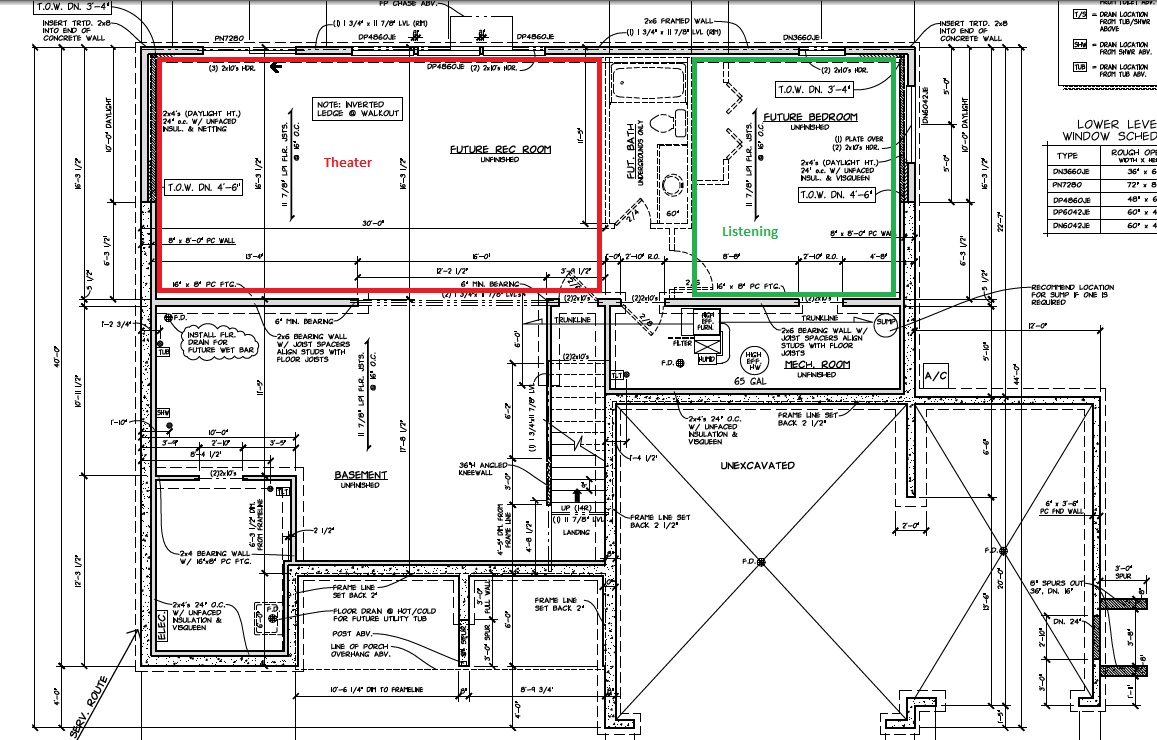Hi,
I am new to the audiophile game, but I have a basement to finish. It has two rooms that I am thinking about doing a quality setup in. There are other rooms as well, but they are less important for now.
The theater: 30x16x8.5
The guestroom/office/listening room: 16x14x8.5
My background is basically in home theater, I have a set of mid range polks in 5.1 along with a top of the line Denon AVR and an OPPO player for tunes. I have made the mistake of hitting up some local stereo shops, and I know what I am missing.
I will be finishing my basement in the next 6-12 months and I am starting to plan. My budget for audio gear will be around 5k, I might be able to go 10k, but my wife says she has to have a Range Rover before i spend that much, and the math just doesn't add up there
I have some questions:
1. Do I even bother trying to do a 2ch mixed with a home theater setup in my budget? I don't mind going used but it seems to me that if I spend 2k on speaks for the front, the surrounds might cost another 2k to match. Should I just move my polks to the theater and go for a nice listening room in the 16x14 space?
2. Do I need to run dedicated electric to these spaces? When we built I put in a 200amp service and it's about half used so far (house is 2700sqft up, maybe 1600sqft down).
3. What else should I consider structure wise? I am planning on insulating all walls and ceilings in the basement for soundproofing. Should I be using special materials on the ceiling or anything to setup the room for sound? Should I try to stud in some acoustic dampers or do wallhangings?
4. I assume carpet is best for sound? I was thinking of making the smaller room cork with a rug.
5. What kind of speaker cable should i put in the ceiling that wont break the bank?
6. For sound, is there any advantage to using a projector screen (the studs were arranged so i could do a motor down screen).
What else should I think about before beginning construction?
If you had a budget of about 5k, what direction would you go?
I have never tried tubes, and I want to, but my budget might be too small. Also, should I hire an audio engineer to look at my space before i begin?
Any and all opinions welcome, I only get one shot at this.

I am new to the audiophile game, but I have a basement to finish. It has two rooms that I am thinking about doing a quality setup in. There are other rooms as well, but they are less important for now.
The theater: 30x16x8.5
The guestroom/office/listening room: 16x14x8.5
My background is basically in home theater, I have a set of mid range polks in 5.1 along with a top of the line Denon AVR and an OPPO player for tunes. I have made the mistake of hitting up some local stereo shops, and I know what I am missing.
I will be finishing my basement in the next 6-12 months and I am starting to plan. My budget for audio gear will be around 5k, I might be able to go 10k, but my wife says she has to have a Range Rover before i spend that much, and the math just doesn't add up there
I have some questions:
1. Do I even bother trying to do a 2ch mixed with a home theater setup in my budget? I don't mind going used but it seems to me that if I spend 2k on speaks for the front, the surrounds might cost another 2k to match. Should I just move my polks to the theater and go for a nice listening room in the 16x14 space?
2. Do I need to run dedicated electric to these spaces? When we built I put in a 200amp service and it's about half used so far (house is 2700sqft up, maybe 1600sqft down).
3. What else should I consider structure wise? I am planning on insulating all walls and ceilings in the basement for soundproofing. Should I be using special materials on the ceiling or anything to setup the room for sound? Should I try to stud in some acoustic dampers or do wallhangings?
4. I assume carpet is best for sound? I was thinking of making the smaller room cork with a rug.
5. What kind of speaker cable should i put in the ceiling that wont break the bank?
6. For sound, is there any advantage to using a projector screen (the studs were arranged so i could do a motor down screen).
What else should I think about before beginning construction?
If you had a budget of about 5k, what direction would you go?
I have never tried tubes, and I want to, but my budget might be too small. Also, should I hire an audio engineer to look at my space before i begin?
Any and all opinions welcome, I only get one shot at this.



